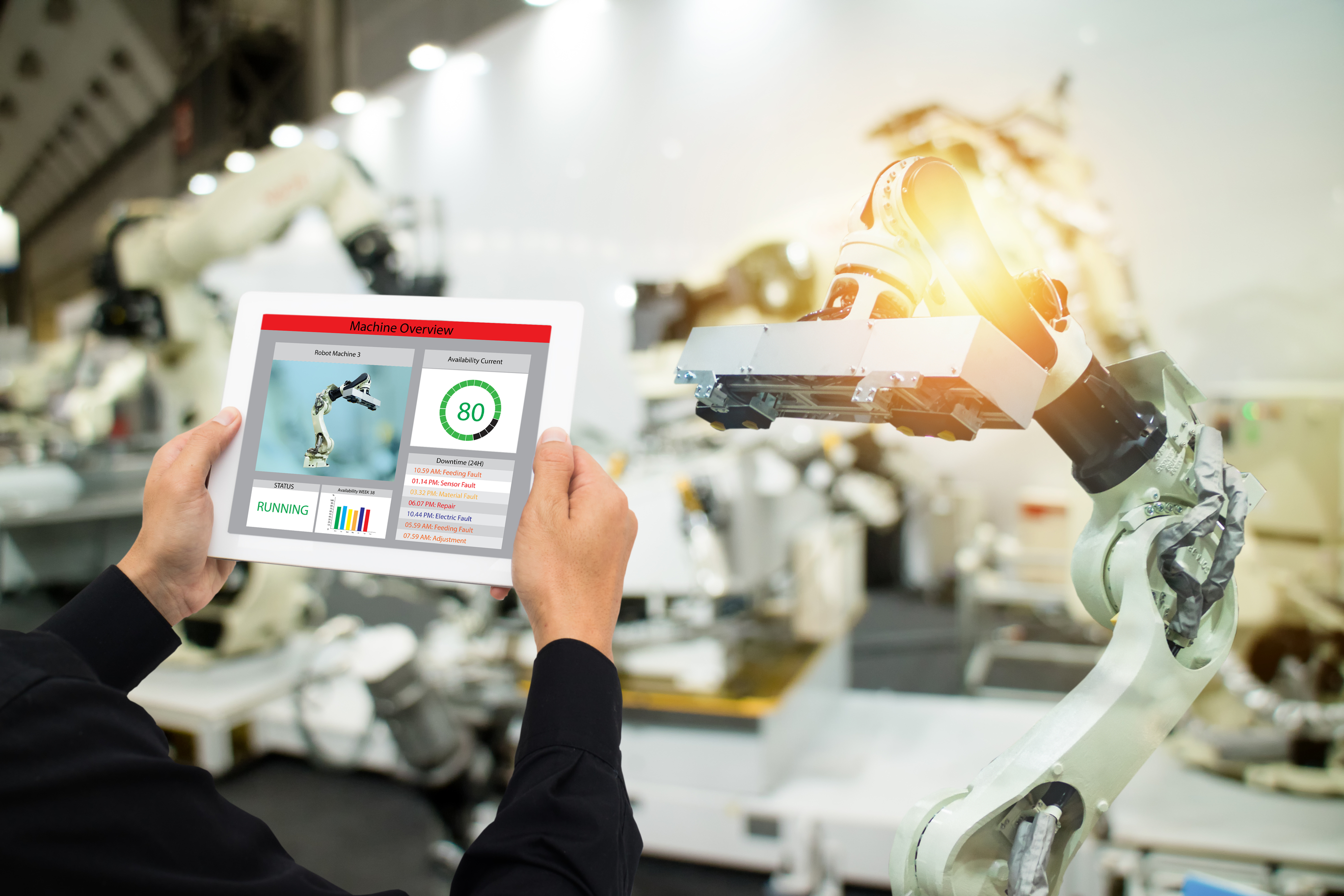A recent report from International Data Corporation (IDC) estimates that IoT spending will reach $772.5 billion this year. The manufacturing industry is expected to lead this IoT investment, with estimated expenditures hitting $189 billion. This trend points to the continued growth of industrial IoT and smart manufacturing.
In this post, we’ll take a closer look at these concepts, the top five ways your manufacturing business can benefit from them, and some guidance to help you get started with IoT manufacturing technology.
What are industrial IoT and smart manufacturing?
Industrial Internet of Things (IoT) is simply the use of IoT technologies in industrial systems. Machines communicate with each other and with their environment and other infrastructures, becoming self-regulating and more intelligent.
Smart manufacturing is a closely related concept. It refers to the use of IoT-connected machinery to monitor (and ultimately improve) the production process.
Both smart manufacturing and industrial IoT rely on the data gathered from embedded sensors within the machines and equipment. These sensors can measure many variables, such as temperature, pressure, and humidity—data that can be used to evaluate and improve the production process. When used properly and efficiently, this data provides excellent, useful benefits.
Five ways industrial IoT helps your bottom line in manufacturing
1. Predictive maintenance
IoT sensors in manufacturing allow you to be proactive about maintenance. Information is delivered in real-time so you can predict when a piece of equipment needs repair.
If the temperature rises above a permissible level, for example, you will be alerted so you can address the problem with the equipment before it actually breaks down. This keeps the production process moving along, rather than grinding to a halt when something breaks.
Predictive maintenance optimizes asset performance, decreases operating costs, and even increases the life of your equipment. But there are a few things you need to know to maximize your ROI in predictive maintenance:
- What data do you need to gather? There is a lot of data that can be gathered, but what do you need? Do you need to measure temperature or vibrations? There are sensors that gather information on less obvious metrics, such as torque or chemical levels. Clearly define the problems you need to solve or monitor, and then identify which sensors will gather the appropriate data, and where they can best be placed. More data is not always better. Relatively few, highly customized sensors are sometimes the right choice, depending on your needs.
- How will you analyze the data? You need to know how to analyze the data once you have it. This may involve complex machine learning algorithms or simple classification heuristics. But you cannot just dump your data into a machine learning application and expect high-quality results—or even useful ones. A proper training set must be curated to teach the system first. This is simple in some cases (monitoring when temperature rises above a certain level, for example), or it can be more complex and require outside expertise. Regardless, you must make sure your data analysis actually yields valuable insights.
Work with a company that has expertise in embedded systems and IoT consulting if you need customized sensors, or are unsure about your data analysis needs.
2. Energy conservation
Smart manufacturing helps you monitor the energy consumption of your equipment. You can determine which pieces of machinery are inefficient energy hogs, and you can compare similar pieces of equipment to identify if one may be wasting energy (and in need of some maintenance).
Energy consumption data can be used to improve your production schedule, reducing total energy consumption, and cutting the associated costs. Pinpointing wasteful energy usage during off hours can also help you save money.
3. Supply chain and workforce optimization
Industrial IoT provides real-time information for all aspects of your supply chain. Efficient implementation provides you with a clear picture of how your materials, equipment, and products move through the process. Where are the inefficiencies and bottlenecks? How can they be improved?
Analyzing this supply chain data is the key to unlocking its utility, as it is with predictive maintenance. You need to gather the right data and use it properly to achieve a smoother supply chain.
The benefits are plenty, including better inventory management, lower production costs, and faster production time. You’ll end up with a clear understanding of the utilization of the machinery in your factory, and where you frequently lose time and money in your process.
4. Cost savings
We have already mentioned several cost savings opportunities in our discussion on preventive maintenance and energy conservation, but there are other ways smart manufacturing can save you money.
The cost savings come from many areas:
- Reduced maintenance costs on machines (preventive maintenance is less expensive than reactive maintenance)
- Less downtime for machinery
- Lower energy bills
- Cheaper inventory and supply chain management costs
- Fewer product recalls and returned items due to poor quality or defects
5. Improved product quality
Your product quality relies largely on your machines performing properly and to the expected standards. They must deliver reliable, reproducible results.
You don’t want to find out you’re producing a low-quality product after a large batch has been made—or worse, after it has already gone out to customers.
Monitoring your equipment with IoT sensors and using the data properly can identify issues that may result in quality degradation. These issues can be investigated and resolved immediately, before you lose time, money, and reputation.
How to get connected
The Internet of Things is a more recent buzzword, but the technology behind it has been around for a long time. That is a good thing, because it means there are experts available to get you started down the right path to maximizing your investment in IoT and smart manufacturing.
Getting IoT connectivity can be simple or quite complex, depending on your industry. There are some considerations specific to manufacturing that you need to consider when planning how you will connect your devices, equipment, and machinery:
- Is your machinery or device in a harsh environment? Things to consider are environmental conditions, heat, electromagnetic noise, and even metal frameworks or enclosures that may block signals.
- Are there power constraints? Does a sensor need to run on a battery for months or years at a time?
- Is your network connection secure?
- Is the device capable of remote updating?
If you’re unsure of the answer to these questions or why these questions matter, be sure to seek expert advice. There are a lot of new players in the market touting IoT skills without the real experience and knowledge behind it. Make sure you’re working with a firm that has extensive IoT expertise with a proven track record to back it up.
Manufacturers can reap many benefits from industrial IoT and smart manufacturing if you know what data you need, know how to get, and know how to use it. Be honest with the skills you have in-house so you make the right choice when it comes time to decide whether to go it alone or seek outside resources.

